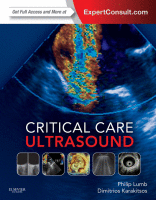Physical Address
304 North Cardinal St.
Dorchester Center, MA 02124

Overview Left ventricular (LV) diastolic dysfunction is a clinical entity that remains poorly understood and identified in the intensive care unit (ICU) setting. It is essential to clarify the difference between diastolic heart failure, LV diastolic dysfunction, and increased LV…

Overview The incidence of out-of-hospital cardiac arrest is estimated to be 50 to 55 per 100,000 in the United States. When a primary electrical cause of cardiac arrest is found, definitive treatment is directed toward reversing the rhythm disturbance (cardioversion,…

Overview Cardiac injury as a result of blunt or penetrating chest trauma is common and associated with significant morbidity and mortality. Approximately 25% of traumatic deaths are caused by cardiac-related injuries, with the majority involving either cardiac or great-vessel damage.…

Overview After development of an esophageal stethoscope, the first transesophageal echocardiographic (TEE) equipment provided simple M-mode images to measure left ventricular (LV) dimensions. First used for intraoperative monitoring of LV function and intracardiac air more than 30 years ago, TEE…

Overview Echocardiography is one of the most powerful diagnostic and monitoring tools available to the modern intensivist. Although its potential was first recognized more than 20 years ago, only recently has it become a mainstream imaging application in the intensive…

Overview Since its early use in intensive care unit (ICU) settings by pioneers, echocardiography has been increasingly performed in critically ill patients because it provides unparalleled information on central hemodynamics. Initially, real-time morphologic and hemodynamic information, ease of use, portability,…

Overview The first reported use of ultrasound to assess cardiac function was almost 60 years ago. Technologic advances have now placed echocardiography as the intensivist’s only option for bedside visualization of cardiac anatomy and function in real time. Although echocardiography…

Overview Convex probe endobronchial ultrasound-guided transbronchial needle aspiration is used for diagnosing (and staging) intrathoracic lymphadenopathy in lung cancer, other intrathoracic tumors, and lymphadenopathy from extrathoracic malignancies. The aspiration yield for benign causes of intrathoracic lymphadenopathy is less than with…

Overview Lung ultrasound is becoming a standard diagnostic and therapeutic tool in the management of intensive care unit (ICU) patients, as analyzed extensively in this section of the book. It helps the clinician to rapidly evaluate thoracic pathologies and guide…

Overview Mechanically ventilated patients often have contraindications to transport outside a monitored setting. Ultrasound is an alternative to traditional imaging techniques in the critical care environment because of its portability, absence of radiation, and real-time image acquisition. This chapter will…